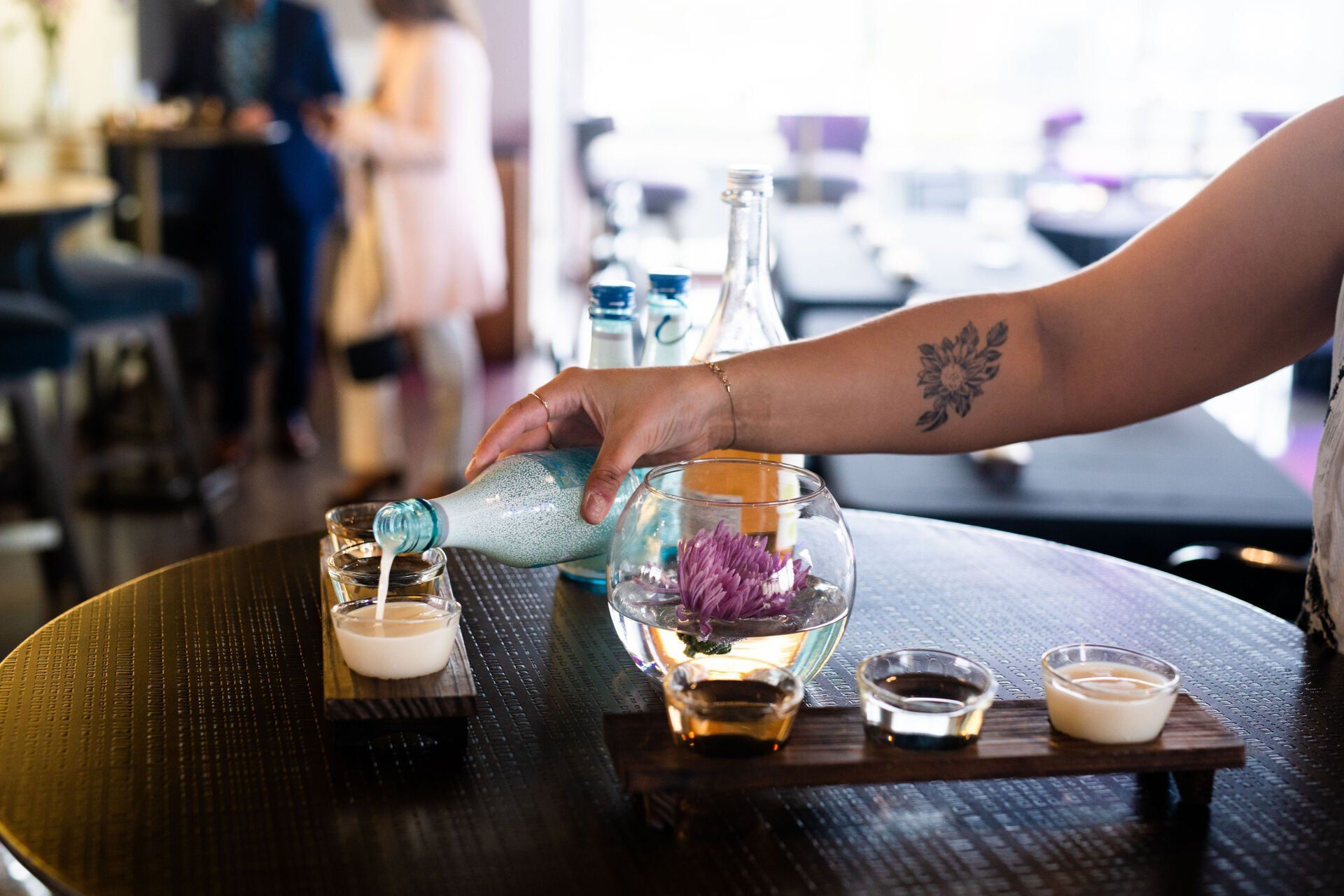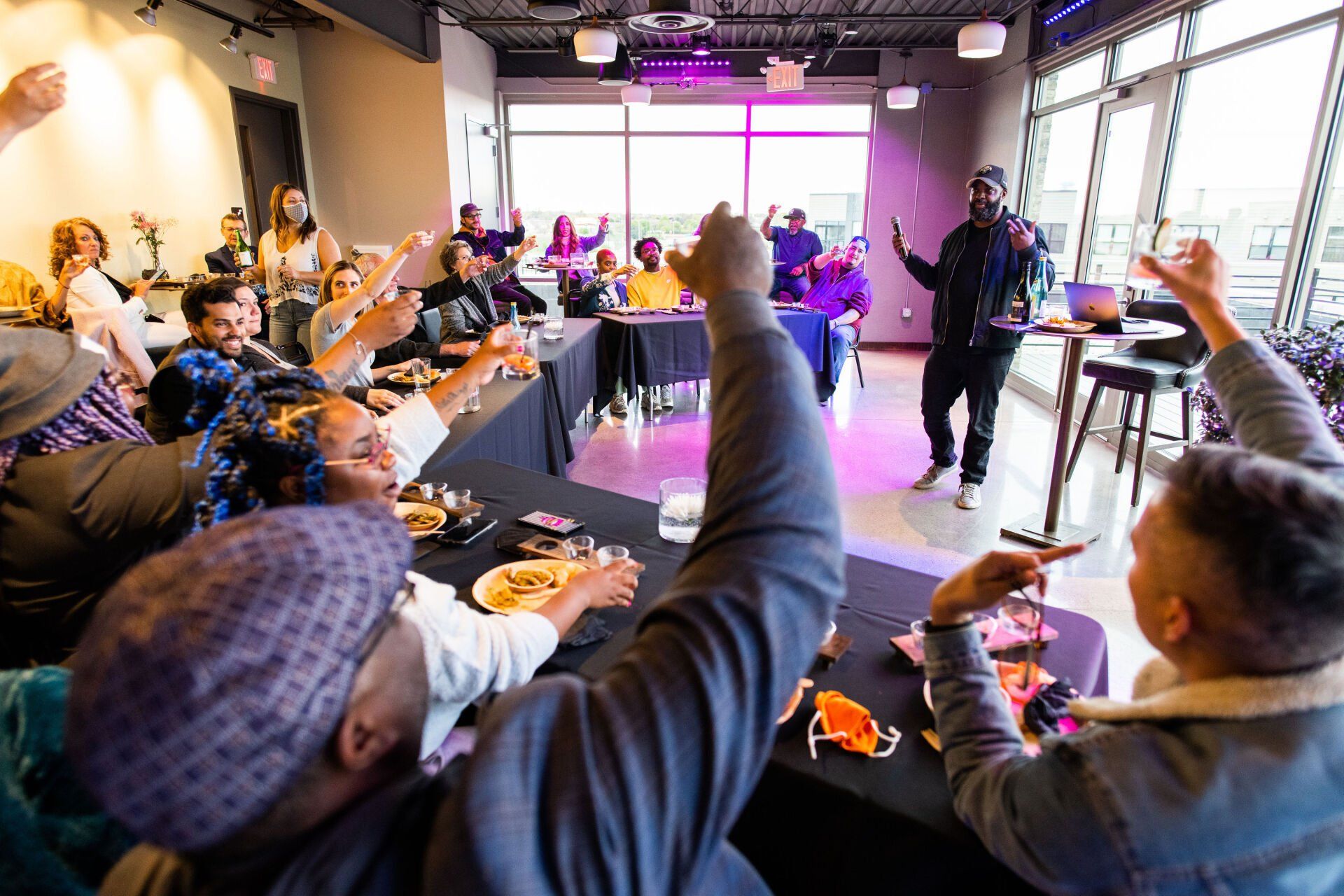'The Joy of Saké' with Tarik Moody
Images courtesy of SHOTBYBASI, and Boutique Photographer
Tarik Moody is a saké scholar, and Digital Director & Host at 88Nine Radio Milwaukee, and was very recently announced as the Program Director for 88Nine's new Urban Alternative channel.
In one word, Tarik is passionate, and his passion crosses all of his interests. From music, to technology, and most recently into the world of saké, Tarik is always looking to increase the visibility and accessibility of the things he loves for communities that are underrepresented in them.
In 2018 he created 88Nine Labs, the mission of which is to make the Milwaukee tech and startup scene more inclusive for underrepresented communities through talks, hackathons, and more. Additionally, he hosts 88Nine's Diverse Disruptors, a podcast highlighting innovators who prioritized inclusivity in their work. Recently, Tarik has begun a journey to learn more about saké and hopefully start his own saké brewery by the time he turns 50. He began with a course from the internationally known sake expert John Gaunter and emerged a certified sake scholar. He hopes to make sake more accessible to more people especially for a diverse population.
Here, I asked Tarik a few questions about his love for, and journey through saké. Tune in for Community Curated, Tuesday, 11/2, on WISN12, nostudios.com, or join us in-venue to learn more about the joys of saké.
Saké has become increasingly popular across the US, though it’s current level of visibility is something that is a recent development. I think it's safe to say that you were ahead of that curve here in Milwaukee — so what first attracted you to saké? And what about sparked the passion you have now?
Basically last year, during the pandemic, I was sitting there — you know everyone is self-reflecting during the pandemic — so I started self-reflecting about something I wanted to do that separates me from my professional job. I got to thinking that I always loved saké growing up. When I first had saké coming out of college, I became a fan of it. This was like the late 90’s, and I’ve always been a fan since then. Even when I was in Minneapolis, I DJ’d at a sushi bar just so that I could get free saké and I always joked that I was going to have my own saké brewery, and now I’m trying to take that journey to have my own brewery.
I know that you have long-term plans of opening your own saké brewery — can you talk about that and your aims in doing so? What would be some of the core tenets of Tarik’s saké brewery?
One of my focuses of opening a saké brewery is… that’s an interesting question. Before I start a saké brewery, or even start the process of learning to brew saké, I wanted to learn the knowledge of saké itself. It is a very — probably one of the most versatile, most complex alcoholic beverages in the world, and I don’t want to jump into brewing without truly understanding and respecting the history and culture behind saké. That’s why I’m on this journey. I set a goal to start brewing by the time I turn 50, which is in about 2 years from now.
In the meantime I’m trying to do everything to learn all I can about saké, and I learn new things every week. I took a course last year, all of January. A six hour course every weekend, and I still don’t know a lot now. I listen to podcasts, I read a lot of books. I buy probably $200 worth of saké to try different ones, just to understand the process, understand the culture, understand the breweries in Japan and even in the United states.
As far as my saké, I have a dream to call it Yasuke — which is the name of the first foreign-born samurai from Africa. There's an anime series about it. I thought it’d be kind of interesting to call it Yasuke saké, in reference to being a foreign-born African-American in saké. All I want to do is make it, and make it in the tradition and respect the culture of the saké, but also add things that I have always been inspired by, and what I’ve learned being in Milwaukee and my whole life.
All I want to do is make [saké], and make it in the tradition and respect the culture of the saké, but also add things that I have always been inspired by, and what I’ve learned being in Milwaukee and my whole life.
If you had to explain the experience of making saké to someone who had never encountered it before?
I’ll simplify it for you: there are 4 main ingredients for making saké. There’s water, of course, there’s rice, there's an ingredient called koji, and then yeast.
The first process involves collecting the rice, but beyond collecting the rice you have to mill it down or polish the rice to a certain ratio to get certain flavors and certain aromas. So the rice is polished at different levels, the higher the polishing rate, the longer the process is to make the saké and the finer the flavor. For example, if you polish a rice down to 50% or higher you get a saké called Daiginjo, which is kind of a premium saké that gives you more floral and really delicate flavors.
Once the polishing is done, you develop a mash by taking the rice, steaming it, and once the steaming is done you add the koji. Koji is the magical ingredient. It is kind of like a bacteria, a spore that you put on it to allow the rice to transform into sugar. Then the yeast you add to it allows it to become alcohol. Once that happens, you have the mash, you let it age for a while in the barrels, and then you press and bottle it. That’s basically a very simplified version of making saké.
You’ve spoken on having a personal goal of introducing saké to populations who may not have the same cultural or physical access to the Japanese product and culture as others here in the US, why do you feel this is important?
I just see it the same as being introduced to wine or whiskey, or any beverage, right? Wine did not come from America, beer did not come from America, so it's the same thing. I feel like saké has been perceived only as something you drink at a sushi restaurant served hot, and that — in a lot of people’s experience — has been bad, or they haven't really liked it because of that experience.
I want to show the rich culture of that beverage. It’s over 2000 years old, per say, about 1000 years in the form it is now — but saké is a beautiful beverage and the magic of making it is all about technique. Beer is all about ingredients, the hops and different types of stuff, but saké is all about skill, technique, and craft. I want to show how wine is versatile with meals, I want to show how saké is just as, or even more versatile than wine.
Though it is on the rise, I would say that saké is still a niche product here in the US. If there was one thing that you could say to someone who’d never had saké, why would you recommend it?
I would recommend it not only because it's alcohol and people like drinking, but there is such an amazing tradition and culture behind it. You know, most beverages don't really have a tradition and culture — it’s “here's a beer, drink it, here’s a wine, drink it”, you know? People always ask: “why is it always such small glasses for saké?” It’s like, it's a social drink! You have a round in circles, and you never pour for yourself, you pour for somebody else. The reason you keep it small is because it keeps conversation going, you loosen up over time.
I think that’s why I would recommend it. Not only because there’s the amazing quality and craft of saké, and the amazing flavors you can find with so many types and so many grades of saké, but for just the social aspect of it and the social traditions behind it. I think it makes it really interesting to enjoy.
Tune in to Community Curated on Tuesday, November 2nd to learn more about saké, and join us for a guided tasting with Tarik November 14th.









